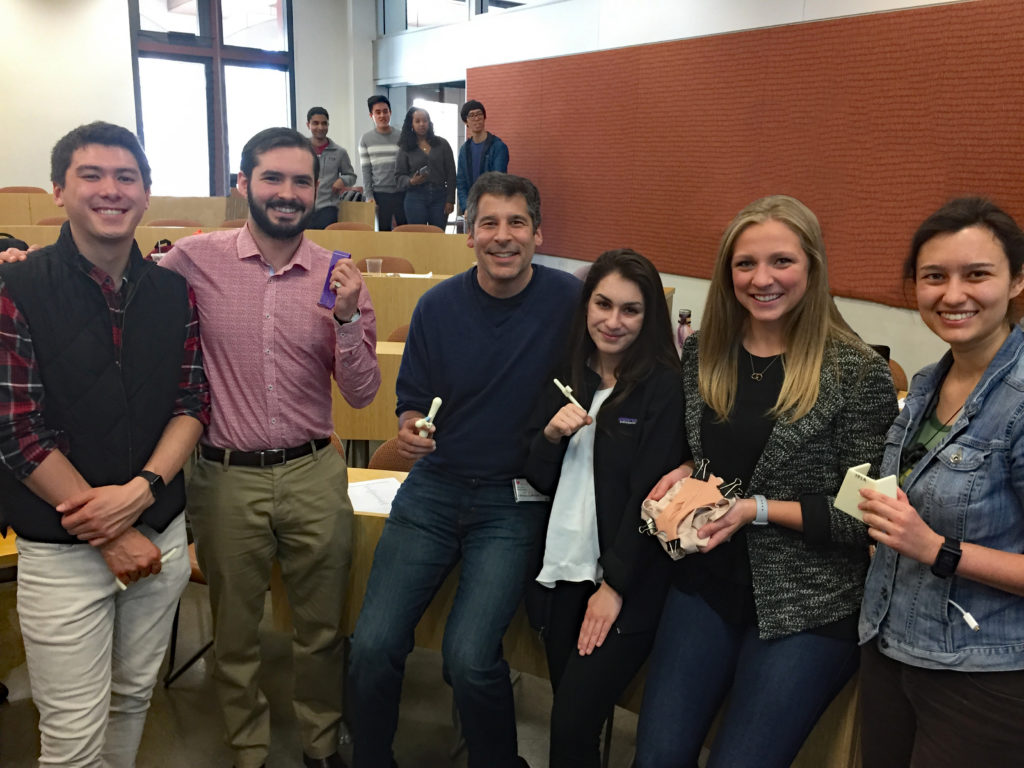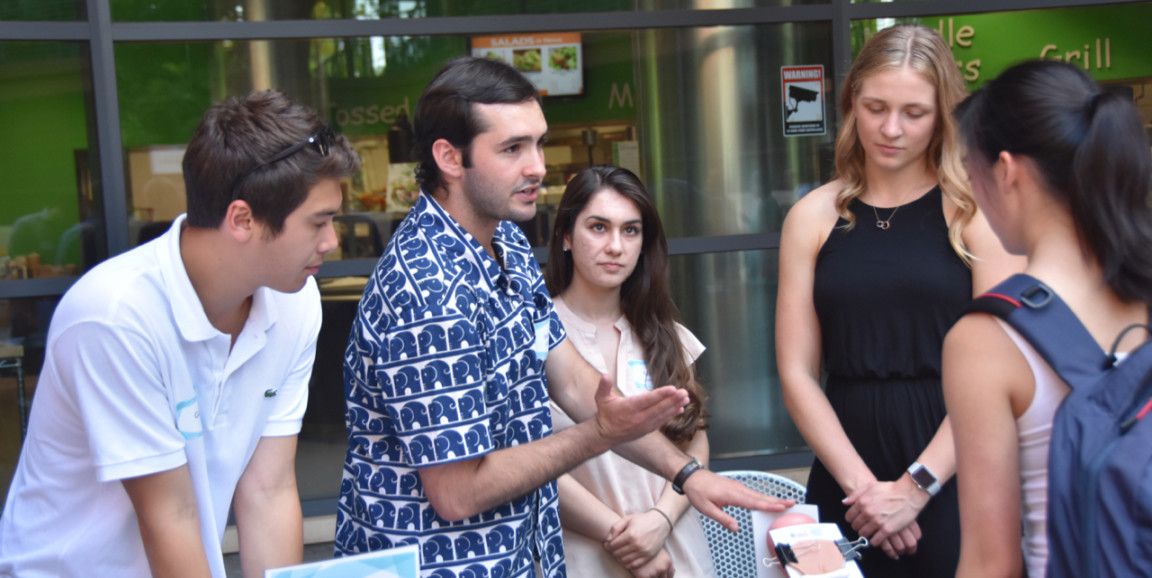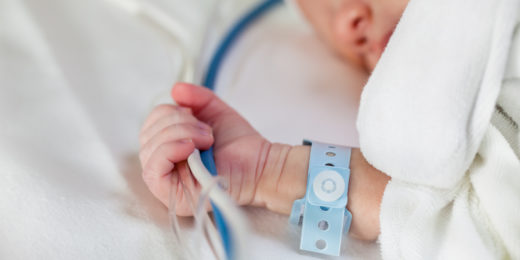As a clinical mentor for the Bioengineering Senior Capstone Design course, Stanford urologist Craig Comiter, MD's first job was to write a story about a problem he had observed in his practice. Students in the course, all senior undergraduate bioengineering majors, would read several such vignettes, choose an unmet need within one of them, and then work in teams to develop a solution.
Comiter wrote about something he saw all the time; the struggles of patients who have to self-catheterize in order to urinate because of a brain, spinal cord, or nerve problem. His scenario described a young woman who was paralyzed from the waist down. He detailed the arduous process she had to perform multiple times each day to empty her bladder, and included the frequent urinary tract infections (UTI's) she contracted as a result.
Students Maria Iglesias, Amanda Urke, Gabe Ho, and Issac Justice all chose Comiter's scenario. "We were drawn to the idea of wanting to improve the patient's quality of life," said Iglesias. "While we personally couldn't really understand what she was going through, we recognized that our lives would be very different if we had this amount of difficulty with a simple task that we take for granted."
To help them understand the patient's perspective, the team created a survey that asked patients to rate the difficulty of each step of the procedure. The results made it clear that the procedure was hardest for women, especially those with impaired mobility. Steps included finding a private place, transferring out of the wheelchair, removing clothing, cleaning the vaginal area, inserting a catheter into the urethra, and then reversing the process. For all women, the single biggest problem was locating the opening of urethra, which often requires the patient to strap a mirror onto her leg.
"Not only does this prevent some women from being able to self-catheterize, it's also one of the major reasons females get UTIs," said Comiter. "They miss the urethra and contact the vagina, contaminating the catheter."
"The responses made us think about how, through the mechanism of use, we could help the patient be certain they were on target," said Urke. She added, "It also brought home the importance of conducting surveys and actually speaking to patients before you get into the design of a solution."

Based on this understanding, the team decided that the most intuitive approach for women would be to use the vagina as an anatomical landmark to help locate the urethra. With input from Comiter and course co-instructor Richard Fan, PhD, they developed more than 40 prototypes of a small plastic device with a handle, a vaginal insert, and a guide that holds the catheter. When the user holds the device with the insert just inside the vagina, the catheter guide is lined up at the urethral opening, and the patient is able to slide the catheter into place.
Next the team created a pair of shorts with a faux vagina and urethra and used it to test most promising prototypes on themselves and on volunteers, even performing the procedure blindfolded. By the end of the spring quarter, they had a working prototype -- the Cath Path.
They entered an NIH-sponsored biomedical engineering competition and won a top prize, prompting them to think seriously about taking their solution forward into patient care. They are currently exploring regulatory pathways and planning next steps including usability testing with real patients.
"It's a device that could help many people," said Comiter. "While self-catheterization is still a complex process for women, this simple, low-cost approach can save time, make a frustrating process easier, and decrease the risk of infection."
The experience showcased the benefits of interdisciplinary collaboration, he said:
When doctors think infection, our solution is antibiotics. When these engineering students heard about infection, their response was, 'Let's find a way to prevent the contamination of the catheter in the first place.' I was the mentor here, but I think I learned as much as the students did. Working with them made me a better problem-solver.
Photo of the team at Biodesign's Health Technology Showcase by Stacey McCutcheon






